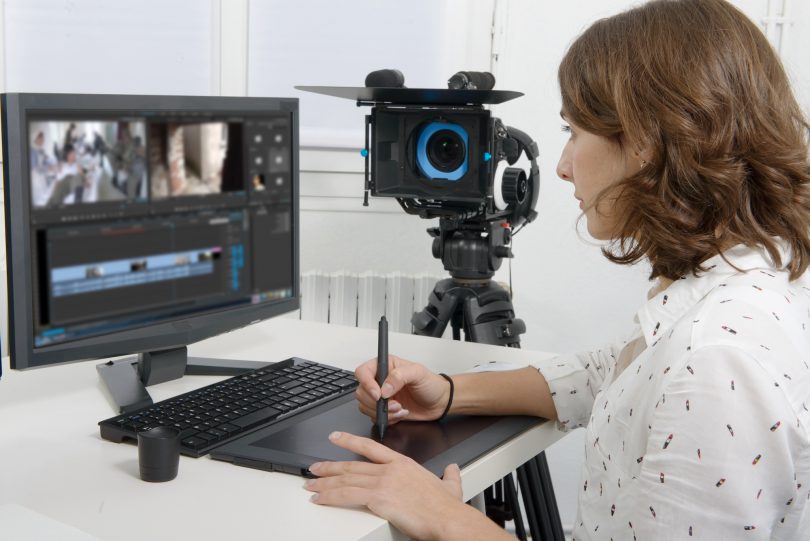It’s not always easy for PR pros to reach their target audience in the highly competitive landscape of 2019. But one surefire way to stand out from your competition is with excellent video storytelling.
No, that doesn’t mean just creating videos. To keep pace, you’ll need to understand how to cater content to your brands, deliver a video to its target audience and measure performance to prove its value. We live in a visual world, and people are significantly more likely to remember what they see than what they read.
On Facebook, for instance, video posts garner 135 percent greater organic reach than photo posts. Today’s PR professional needs to be able to capitalize on that engagement with a savvy approach to telling stories visually.
I’ve spent more than 20 years honing video storytelling skills with my team at MediaSource. One mistake I see communicators make is jumping right into video content creation before setting the strategy.
So when you’re considering video storytelling, here are four key steps, from strategy to assessment:
1. Ideation
In the ideation phase, you’ll want to develop a plan for cross-channel content marketing that will drive exposure and reach your target audience. You should organize your staff like a newsroom, brainstorming ideas that highlight your brand’s featured products and services. Consider connecting your topic to a hook or larger idea while staying focused on the content at hand.
2. Creation
When it comes to creating your video content, your team needs to focus on content for multi-channel media. All video isn’t created equal, and different brands, platforms and topics require different creative pushes.
Sometimes, a 30-second video is the most effective strategy. Other times, a longer video with more depth provides the message your client is looking for. Having a video pro on staff is key to choosing the right visuals and presenting them in the right way.
As always, it’s important to remember your audience when creating your video content. If you need to explain a complex topic to a wide audience, then you’ll want your video to simplify and plainly explain the concepts involved.
If your video serves as a visual complement to written content, then be sure it provides visuals and demonstrations words can’t. Not everyone will turn their sound on, so videos with text can be more effective and add an explanation to what’s happening on the screen. Remember, your video’s job is to bring your content to life.
3. Amplification
Once your content is created and you know your target audience, you’ll want to embark on cross-channel amplification to your audiences using an integrated approach that includes the PESO model. The PESO approach incorporates paid, earned, shared and owned platforms. Each of these different forms of distribution targets a different audience, and it’s crucial to be sure your team knows how to properly address all four.
With a good PESO plan, PR pros can be sure to get their video content to a variety of audiences. And while each piece of PESO is important, emphasizing just one channel isn’t enough. By learning which channels yield the best results for different types of videos, you’ll be able to find the best home for your content so that your hard work and professional storytelling doesn’t go to waste.
4. Evaluation
Before you can evaluate the success or failure of your storytelling, you’ll need to define the overarching objectives of the project in advance. As content is delivered, PR pros need to be ready for real-time strategy adjustments and know how to measure the success of your content marketing campaign.
Video success can’t be judged solely on whether your content reaches your target audiences. Once you’ve created and distributed your video, PR pros need to understand how to prove clients are getting a return on their investment.
These measurables go far beyond retweets and page views. By employing analytics experts, your team can learn far more about the people your content is reaching and how that content is performing. Analytics teams can assess engagement on different pages, track where audiences travel from different pages of the site and pinpoint areas where your team can improve its outreach.
Using measurements and analytics to support your video work is key. An experienced PR team will have specific reports that detail the performance of their work and how that performance relates to the goals and expectations set out by clients. This resource has been crucial for MediaSource projects like the Opioid Technology Challenge, which garnered record-breaking web traffic and hundreds of entries in a short period.
By developing your video plan using these four steps, your team can create a strategy that fits your specific brand and drives the results you’re looking for.
Interested in learning more about visual storytelling? At the PRSA 2019 International Conference, Oct. 20-22 in San Diego, I’ll join other industry experts who will share tips and best practices to help you succeed in video storytelling and other communications strategies.
Lisa Arledge Powell is president of MediaSource, an award-winning creative agency that specializes in content-focused public relations, content marketing and national media exposure for major brands. Connect with Lisa on Twitter: @LisaArledge







